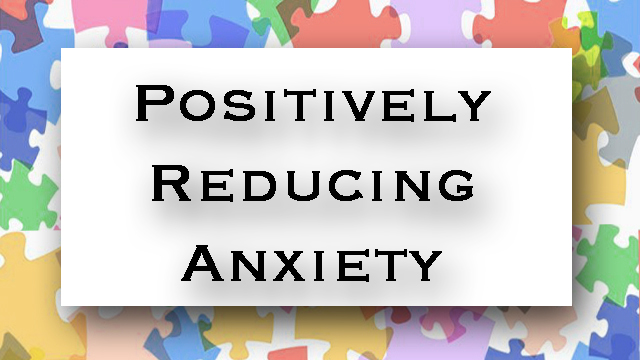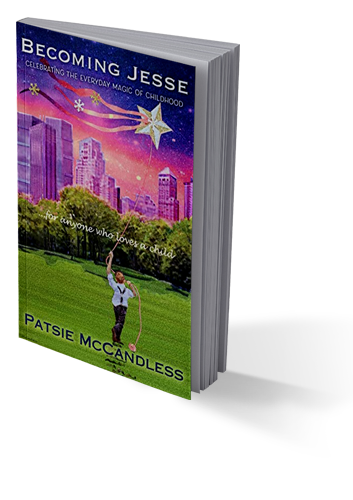Positively Reducing Anxiety
Reducing anxiety requires active treatment, and some of the most effective ways to treat it entail real changes in your behavior and lifestyle.
The last few weeks’ blogs have addressed how anxiety is challenging our society like never before. Anxiety has everything to do with negative expectation. It can disrupt your daily life with your family, friends, at work or school. It is a mental and physical state that can too easily become chronic because of how anxiety weaves through your body’s system.
Let’s take a look at how to successfully treat anxiety.
Treating Anxiety
Medication
This is often an option that people want – just to get rid of the burden of anxiety. However, medication does not change the stress under which you live every day. Thus, anxiety does not go away. And you are left increasing your levels of medication. A terrible Catch-22.
Exposure
You can challenge the negative thought patterns that keep feeding your anxiety. One therapy for reducing anxiety is known as “Exposure”. It safely and gradually exposes patients to the fears that are causing their anxiety, instead of merely trying to avoid the stressful situation.
Life-style Changes
Another therapy helps with “Life-style” changes. This builds up a solid base for long-term management of anxiety by aiming at reducing anxiety in particular aspects of an individual’s habit patterns through:
-
Nutrition:
Avoiding foods that are high in sugar and flour, reducing fats to which negative hormones can cling, and drinking appropriate levels of water to keep the body hydrated, can be the first step in creating positive mental and physical patterns.
-
Exercise:
Running or walking helps release the muscle tension from stress and also changes the brain waves, creating open pathways for the pre-frontal cortex to think and communicate rationally.
-
Deep-breathing techniques:
Deep- breathing directly affects the nervous system, diminishing fear and bringing a sense of calm.
-
Meditation:
This practice calms the body, mind and emotions allowing well-being to flow naturally through the individual.
-
Divesting
Let go of things that add to your anxiety. Things that do not serve you. For example, technology, social media and news streams. These have have increased digital-screen-time in all layers of society. Scrolling endlessly through YouTube or TikTok, can easily become an addiction, especially in children and teens, who do not have a fully developed Pre-frontal Cortex to help regulate their tech use.
Tech addiction floods your brain with overloads of dopamine, and the ‘hangover’ from it leaves you exhausted. You become irrational and prone to either emotional outbreaks, or debilitating inwardizing. Anxiety can take root in you much faster when you are in this state.
Knowing How Anxiety Works
To review: physically, anxiety will increase your heart rate, upset your stomach, and affect the natural flow of your speech. These signals are built into your human system to help you survive and thrive.
What is actually happening, is that more blood and oxygen are pumping into your brain, your organs, your muscles. And this can be positive: it prepares you in a very positive way, for whatever stress is affecting you.
This is a positive energy in anxiety that can help you in actually reducing the anxiety! Once you know the physical signs of anxiety, instead of fearing them, you can pivot! So you can feel stimulated, instead of worried or apprehensive. Energized instead of cringing.
Your Practice
With practice, this knowledge prepares and liberates your body. You can change your belief: by feeling that anxiety is an advantage, instead of an affliction. The best part is that your body follows your new thinking: your heart rate steadies, your blood pressure lowers, and you feel self-assured to function, even under stress.
When you practice knowing the signs of anxiety, outlined in my previous blogs, you can pivot to the positive, focus confidently and engage successfully.
Support of Others
In another past blog I spoke of manifesting your dreams, not in your own personal vacuum, but with the help and support of others. Managing your anxiety is another area where others can play a significant role.
Research shows that anxiety increases levels of the hormone oxytocin, which prepares humans to seek out more social comfort, assistance and connection. In a high anxiety situation, if you simply hold the hand of someone you love, you can actually calm areas of your brain.
Your Personal Purpose
You want to lead a healthy and happy life. You do not want to be plagued by daily bouts of anxiety. A key piece is to know and nurture your own personal sense of purpose in life. What are your values? Do you know what gives your life meaning? What do you cherish?
When you take the time to contemplate your own personal answers to these questions, you are focusing on your positive relationship with yourself. There is no room for anxiety in there.
Having, knowing and nurturing your purpose in life is a lot like breathing deeply and meditating.
If you are not sure of how to do this, remind yourself specifically, saying something like: I want to:
- pause and breathe deeply;
- feel my calm;
- feel the shift in my frame of mind to the positive;
- notice that my focus, my attention and my intellect are increasing;
- I want my family and friend connections to feel more satisfying;
- I want to uplift my physical well-being.
Anxiety Under Control
These are some of positive steps – instead of medication – which you can undertake to help you find relief from anxiety. The steps are not so much about anxiety itself – but much more about how you deal with your anxiety. Let it motivate you to prepare for stress in a positive way, feeling stable and confident.
Next week’s blog looks at bringing a sense of calm for your children… of course, with your…
Light On!






